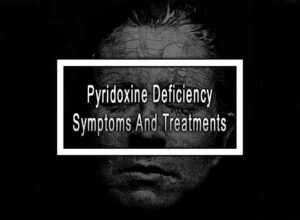Emotional Freedom Techniques, also known as EFT, is a unique and powerful form of therapy that combines elements of traditional psychotherapy with acupressure. EFT is a simple technique that uses tapping on specific points in the body to release negative emotions and promote emotional healing. The goal of EFT is to help individuals overcome emotional blocks, limiting beliefs, and traumas that are causing them distress and negatively impacting their daily lives. This article will explore the basics of EFT, its benefits, the science behind it, and its effectiveness.
Table of Contents
ToggleWhat are Emotional Freedom Techniques?
EFT is a form of psychological acupressure that involves tapping on specific meridian points on the body. The technique is based on the principles of traditional Chinese medicine, which state that the body has a vital life force called Qi (pronounced Chee) that flows through channels called meridians. According to EFT, negative emotions and experiences can create blockages in the meridians, which can cause physical and emotional discomfort.
EFT aims to release these blockages by tapping on specific meridian points while focusing on the issue at hand. The tapping sends a calming signal to the amygdala, the part of the brain responsible for processing emotions, which can help reduce the intensity of negative emotions. EFT also involves affirmations and cognitive restructuring to help individuals replace negative thoughts and beliefs with more positive ones.
Benefits Of Emotional Freedom Techniques
EFT can help with a range of physical and emotional issues, including anxiety, depression, PTSD, phobias, addictions, chronic pain, and more. One of the main benefits of EFT is that it is a non-invasive technique that can be done almost anywhere, making it an accessible tool for self-care. EFT is also cost-effective, as it does not require medication or lengthy sessions with a therapist. The following are some of the benefits of EFT:
- Reduces stress and anxiety: EFT can help reduce the intensity of negative emotions, including stress and anxiety, by calming the nervous system.
- Promotes emotional healing: EFT can help individuals release negative emotions and traumas that are preventing them from moving forward in their lives, promoting emotional healing.
- Improves physical symptoms: EFT has been shown to help with physical symptoms such as chronic pain and headaches by addressing the underlying emotional issues.
- Boosts self-confidence and self-esteem: EFT can help individuals overcome limiting beliefs and negative self-talk, replacing them with more positive thoughts and beliefs.
The Science behind EFT
While the mechanism behind EFT is not yet fully understood, there is some scientific evidence to support its effectiveness. Studies have shown that EFT can help reduce the symptoms of PTSD, anxiety, and depression. The following are some of the ways in which EFT may work:
- Regulation of the amygdala: EFT has been shown to reduce the activity of the amygdala, the part of the brain responsible for processing emotions, which can help reduce the intensity of negative emotions.
- Reduction of cortisol levels: Cortisol is the hormone that is released in response to stress. EFT has been shown to reduce cortisol levels in the body, reducing the physical effects of stress.
- Stimulation of the parasympathetic nervous system: The parasympathetic nervous system is responsible for the body’s “rest and digest” response. EFT has been shown to stimulate this system, helping individuals feel calmer and more relaxed.
Effectiveness of EFT
EFT has been found to be an effective form of therapy for a range of emotional and physical issues. One study found that EFT was effective in reducing PTSD symptoms in veterans, while another study found that EFT was effective in reducing the symptoms of anxiety and depression.
EFT has also been found to be effective in reducing the symptoms of chronic pain. A study published in the Journal of Pain found that EFT was effective in reducing pain and improving the quality of life in patients with chronic pain conditions.
Conclusion
Emotional Freedom Techniques is a powerful and effective form of therapy that combines elements of psychotherapy with acupressure. EFT is an accessible tool for self-care that can help individuals overcome emotional blocks, traumas, and limiting beliefs. The technique is non-invasive, cost-effective, and can be done almost anywhere. EFT has been found to be effective in reducing the symptoms of a range of emotional and physical issues, including anxiety, depression, PTSD, and chronic pain. While the mechanism behind EFT is not yet fully understood, there is scientific evidence to support its effectiveness. EFT can help individuals promote emotional healing and lead a more fulfilling life.
Emotional Freedom Techniques FAQ
Here are the most common questions about emotional freedom techniques.
How does EFT work?
EFT works by stimulating the body’s energy meridians or pathways by tapping specific acupressure points with one’s fingertips. This helps the body release emotional blockages that may be impairing physical or psychological well-being.
What are some examples of issues EFT can address?
EFT can be used to address a wide range of issues, including anxiety, depression, PTSD, phobias, addiction, weight issues, chronic pain, and limiting beliefs.
Can EFT be used in conjunction with other therapies?
Yes, EFT can be used with other therapies such as cognitive-behavioral therapy (CBT), psychotherapy, hypnotherapy, and medication, or used alone as a standalone technique.
Is EFT safe?
Yes, EFT is considered safe for most people. However, it’s important to note that EFT has not been extensively studied and may not be appropriate for everyone, particularly people with mental health conditions or those with medical conditions that require medical attention.
How long does it take to see results with EFT?
Results can vary from person to person, but some people may see immediate relief after just one session of EFT. Other people may require multiple sessions or ongoing tapping to achieve lasting results.
Is EFT considered a form of alternative or complementary medicine?
Although EFT was initially considered part of the alternative and complementary medicine fields, it has gained recognition within mainstream therapy and healthcare as an effective adjunct therapy.
Can anyone learn and practice EFT?
Yes, anyone can learn and practice EFT, regardless of age, gender, or background. There are many resources available online, such as videos, books, and courses, to help individuals learn EFT. However, it is often recommended to work with a certified EFT practitioner to ensure proper technique and personalized guidance.
More like this: Benefits Of Laughter Therapy












